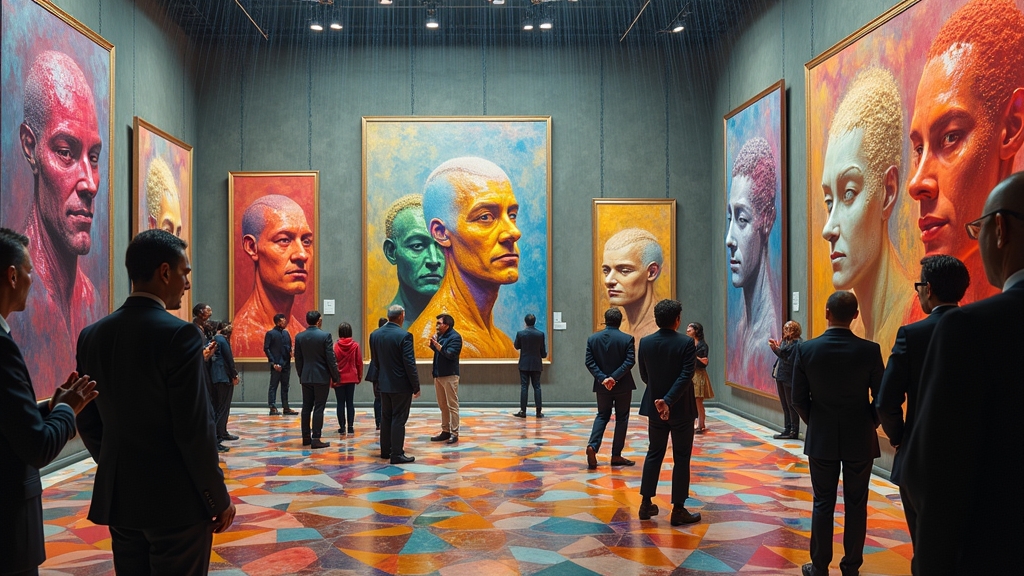AI ART GENIUS MAKES MACHINE STARE AT HIS MEDIOCRE PAINTINGS UNTIL IT HALLUCINATES THEY’RE GOOD
NEW YORK — Celebrated postmodern artist David Salle has successfully taught artificial intelligence what generations of art critics couldn’t quite manage: to actually like his work. In a stunning display of technological manipulation, Salle has programmed image-generating software to “beef up” his previously underwhelming canvases from the 1980s, essentially creating the world’s first digital art sycophant.
THE ULTIMATE ARTISTIC REACH-AROUND
The groundbreaking technique involves feeding Salle’s earlier works into an AI system and instructing it to “make this better, pretty please.” The results are what art experts are calling “wildly sprawling,” which appears to be the polite way of saying “a computer threw up after looking at too many Warhols.”
“What I’ve essentially done is send AI to art school,” Salle explained during the exhibition opening, while sipping from a champagne glass filled with what witnesses described as “either very expensive wine or printer toner.” “I figured why spend decades refining my craft when I could just have a f@#king computer do it for me?”
EXPERTS WEIGH IN, IMMEDIATELY REGRET IT
Dr. Pretentia VonGallery, curator at the Institute for Things That Might Be Art, called the exhibition “a paradigm-shifting exploration of authorship that challenges our very understanding of creative genesis,” before admitting she had absolutely no idea what the hell she was talking about.
“Look, we’ve been pretending to understand Salle’s work since the 80s,” whispered VonGallery after her fourth glass of wine. “At least now we can blame our confusion on algorithms instead of our art history degrees.”
AUDIENCES REACT WITH CHARACTERISTIC BEWILDERMENT
Visitors to the Thaddaeus Ropac gallery in London have reported mixed feelings about the AI-enhanced paintings, with approximately 87% of attendees nodding thoughtfully while secretly planning their lunch.
“I especially appreciate how the digitally printed underpainting interacts with the gestural brushstrokes,” said one patron, Jeremy Whiteclaw, while desperately googling “what the sh!t is underpainting” on his phone behind his back.
THE FINANCIAL ANGLE, BECAUSE OF COURSE
Art market analyst Buck Millingham estimates that adding “AI-enhanced” to the description of previously unsellable works increases their value by approximately 4,000%, noting that “rich people will buy literally anything if you convince them it’s from the future.”
Salle’s gallerist commented that collectors are particularly excited about owning artwork that “might become sentient someday and appreciate in value even more when it develops its own Instagram following.”
THE INEVITABLE EXISTENTIAL CRISIS PORTION
Professor Iwan Toogiveup from the Department of Digital Humanities at Columbia University raises important questions about the exhibition: “If an AI enhances a painting based on an artist’s previous work, and that artist was already derivative of artists before him, who exactly is getting ripped off here? Is it turtles all the way down? Are we ALL just poorly trained algorithms?”
Meanwhile, Salle has already announced his next project: teaching AI to attend his gallery openings and make small talk with wealthy patrons, freeing him up to “do literally anything else with my time.”
As Salle himself supposedly quipped on his way out of the gallery opening, “The great thing about AI is it doesn’t know my early work sucked, it just thinks that’s what I was going for all along.”





